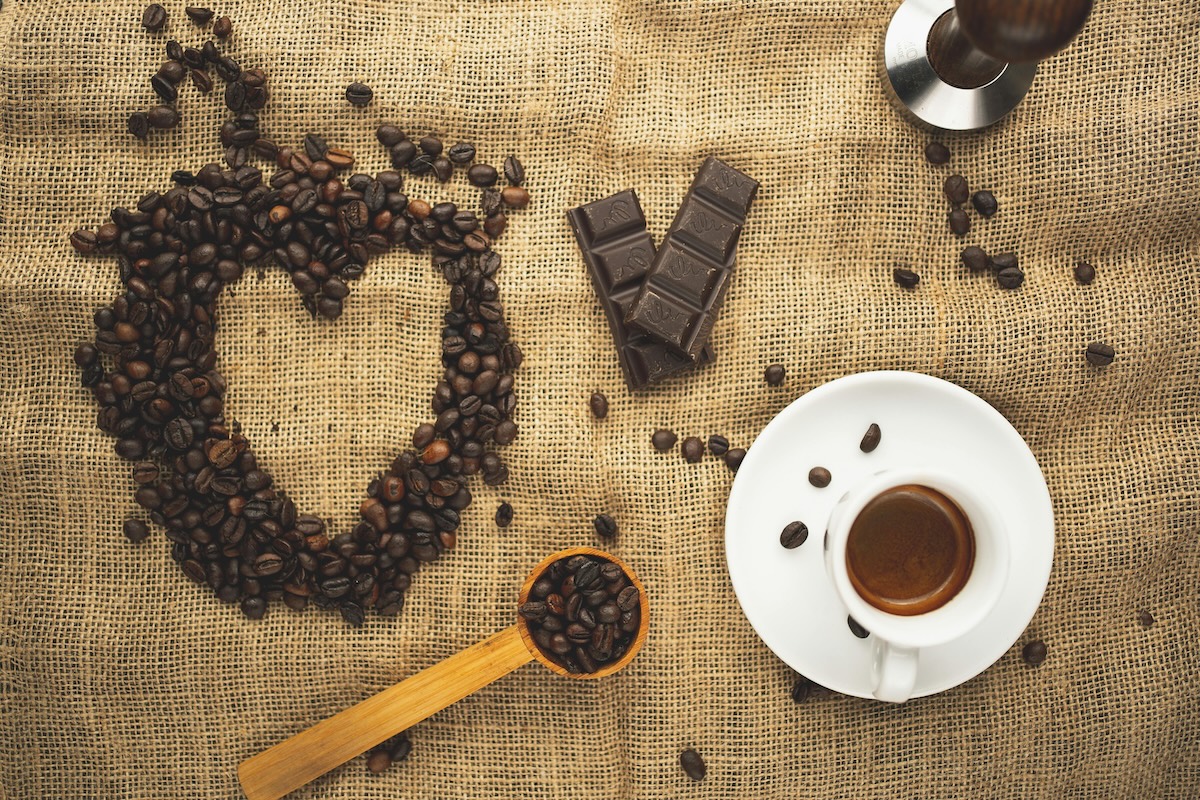Hitting where it hurts: climate change affects wine, coffee and chocolate

Some people still don’t understand the urgency of climate change action, despite significant efforts to communicate the impacts it will have on our ecosystems, communities and businesses. So let’s take it closer to home and see how climate change could impact some of the things you (and Scientell) hold dear – coffee, wine and chocolate!
Climate change impacts on coffee
The 2 main commercial coffee varieties are Arabica and Robusta. Both are sensitive to climate conditions. Arabica coffee is the most popular coffee bean, making up most of the global production, but it is less heat tolerant than Robusta.
Rising temperatures and changing rainfall patterns affect coffee production in multiple ways. Higher temperatures and wetter conditions can increase pests and fungal infections, and temperatures above coffee’s optimal temperature range (about 18 – 21 °C for Arabica) can degrade the quality of the coffee beans. Exposure to extreme heat can also damage coffee plants and leaves, and stunt their growth.
Climate projections suggest that the areas suitable for growing coffee, especially in Brazil and Southeast Asia’s Arabic coffee-growing regions, may shrink by 30 to 85% by 2050. Robusta coffee growing areas will also experience significant losses in suitability, particularly in regions such as the Congo Basin and Brazil.
On a global scale, climate change may reduce the area suitable for Arabica and Robusta coffee by about half.
But it’s not all bad news. There are ways to reduce the impacts of climate change on coffee beans. Some farmers use shade cloths or shade trees to protect coffee plants from high temperatures and sunburn. Selecting coffee strains with a higher tolerance to heat, and new cultivation and irrigation techniques and practices, may also help.
Climate change impacts on wine
A changing climate will bring challenges to the Australian wine industry. Hotter, drier and more arid conditions will affect many Australian wine-growing regions, as will more extreme events, including storms, heatwaves and bushfires. This may make it harder to produce some varieties of wine in their current growing regions, such as cool-climate chardonnay and pinot noir. As a result, grape varieties, growing and harvesting methods, and vineyard locations are changing. Some producers are relocating south, but this is not a viable alternative for the entire industry.
Luckily, Australia’s wine growers are already skilled at responding to our variable climate. According to Wine Australia, some adaptation responses already being used in Australian vineyards include modifying irrigation practices in response to heatwaves and frost, mulching to retain soil moisture, delaying pruning practices to manipulate harvest dates, using shade cloths, and conducting research into heat and drought-tolerant grape varieties.
Climate change impacts on chocolate
Whether you like milk, dark or white chocolate, the last thing you want to hear at Easter is that climate change may reduce its availability or quality.
Cacao trees grow under specific conditions. They require uniform temperatures, high humidity and rainfall, and nitrogen-rich soil. As climate conditions become drier due to higher temperatures and increased evaporation, cacao-growing regions may change, moving to higher-elevation areas that are cooler and wetter. Climate projections suggest that for the main areas of cacao production, including Ghana and Côte d’Ivoire, many current growing regions will likely be unsuitable by 2050.
Site-specific adaptation strategies are required to reduce the vulnerability of cacao farmers so they can continue to produce the key ingredient for chocolate. Adaptation actions include strategically planting shade trees to decrease temperature and evaporation, applying compost to improve soil quality and moisture, adopting water retention measures, and selectively breeding seeds or developing genetically modified cacao plants that are more tolerant to harsh climate conditions.
If hearing about climate change’s negative impacts on coffee, wine and chocolate doesn’t motivate you to act on climate change, what will?!
More information
Coffee
- Bunn, C., Läderach, P., Ovalle Rivera, O. et al. A bitter cup: climate change profile of global production of Arabica and Robusta coffee. Climatic Change 129, 89–101 (2015). https://doi.org/10.1007/s10584-014-1306-x
Wine
- Harris, R. M. B., et al. (2019) Australia’s wine future: Adapting to short-term climate variability and long-term climate change. Final report to Wine Australia, Antarctic Climate and Ecosystems Cooperative Research Centre, University of Tasmania, Hobart, Tasmania. https://www.wineaustralia.com/research_and_innovation/projects/australias-wine-future
- The Age. Say goodbye to chardonnay: Global warming changing the wines Australia can make, 2022. https://www.theage.com.au/environment/climate-change/say-goodbye-to-chardonnay-global-warming-changing-the-wines-australia-can-make-20220429-p5ah8h.html
- Wine Australia website, accessed March 2024. https://www.wineaustralia.com/growing-making/environment-and-climate
Chocolate
- Läderach, P., Martinez-Valle, A., Schroth, G. et al. Predicting the future climatic suitability for cocoa farming of the world’s leading producer countries, Ghana and Côte d’Ivoire. Climatic Change 119, 841–854 (2013). https://doi.org/10.1007/s10584-013-0774-8
Date Posted:
March 27, 2024
